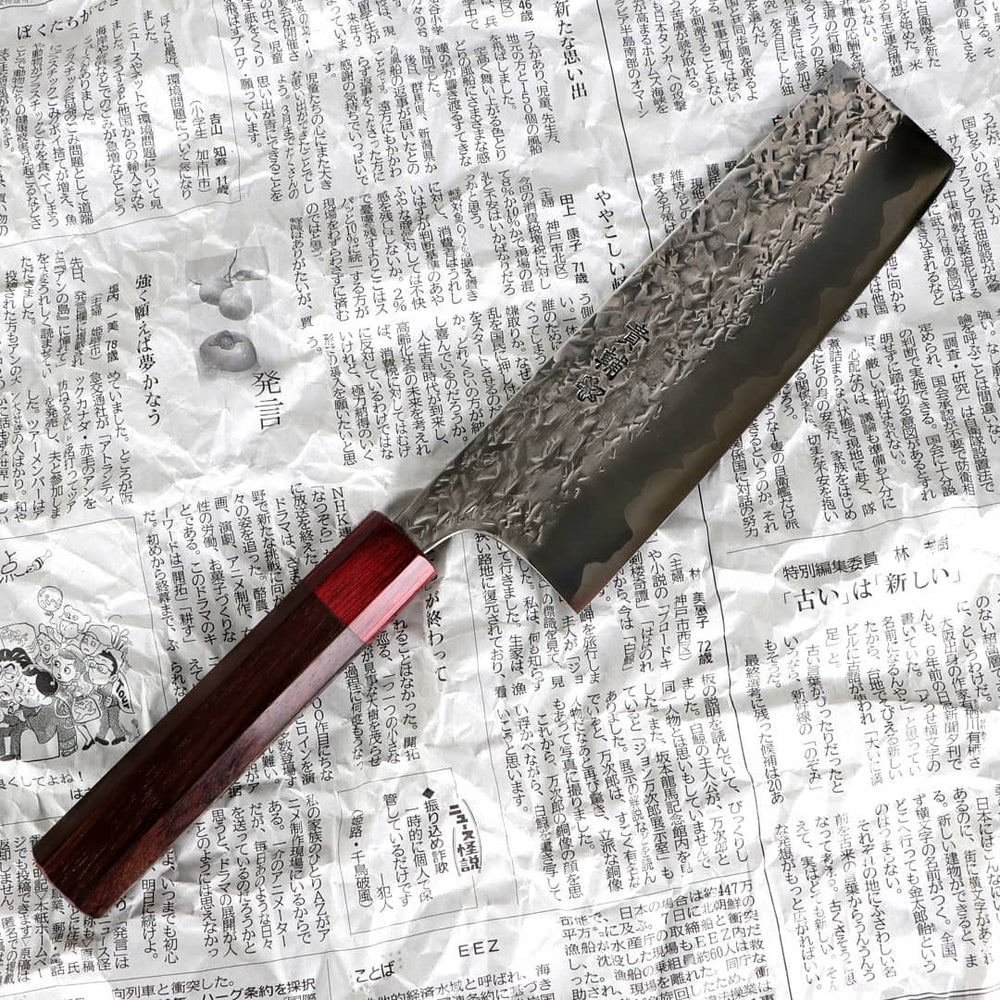Buy Your First Japanese Knife
Buying a Japanese Knife - What to consider?
If you have never bought a Japanese knife before, or have never dealt with this topic, then read this short text to get an overview. We have summarized a few points that would have also helped us back then before buying a Japanese knife for the first time. The subject of Japanese chef's knives is a bit of a science, but getting to grips with it is really fun. You can research a lot and for a long time on the internet before you actually find the "right" knife and then eventually buy it. Ultimately, it won't stop at one Japanese chef's knife, and with the experiences you'll have, you'll explore your personal preferences.
About 15 years ago, I wanted to get my first Japanese kitchen knife and in the selection process I felt a little overwhelmed. In the end, it chose a Santoku knife made of Aogami steel, although I was quite sceptical due to the blade's potential susceptibility to rust. I have never regretted this purchase and I am glad that I did not choose one of the "Europeanized" knives with a Japanese look.
On the Internet nowadays you can find so much information, videos and alleged expert blogs, whose information is partly just misleading or wrong. Also, unfortunately, many black sheep are floating around, which distribute so-called Japanese blades on the Internet. Unfortunately, they often try to deceive customers with descriptions such as "Asian knife set" or "blades made of Japanese steel" and present cheap products as genuine Japanese knives. Therefore, one should always be vigilant and exercise caution with extreme discounts or supposed bargain prices. A Japanese knife has a certain price tag for a reason, which can be off-putting to newcomers. However, if you understand and have experienced the quality, durability and craftsmanship behind it, you will understand where that price comes from.
But back to the actual topic - Which Japanese knife should you buy first? Often you will be recommended a Santoku knife and this is a legitimate opinion. Less often you will read Gyuto or Bunka. For us, all three blade types are understandable as the first knife, although we would probably tend to the Bunka knife or Gyuto knife. The Gyuto is the equivalent of the Western chef's knife and the Bunka is a traditional Japanese blade shape that we love. Unfortunately, you can hardly find Bunka knives in Europe anymore, but in our store we offer a lot of different Bunkas and we do it with conviction.
The blade size is a matter of preference, but a blade between 16 - 21cm is a good choice. Gyuto knives are even still made by many blacksmiths in a length of up to 30cm. Typically, Bunka and Santoku are most commonly found with a blade length of 16 - 20cm. Other blade lengths are rather exceptions. The blade should fit your cutting board at home. A blade that is too large is not practical for small cutting boards and is not fun to use.
Once you have decided on a particular blade shape, the next step is to select the blade steel. Here, the question is how traditional the steel should be, and thus how susceptible it is to rusting. If a blade is allowed to rust, then its steel is also harder than stainless steel blades. Stainless steel knives require less maintenance, but cannot be sharpened as well as their low-rust alternatives. The harder a blade steel is, the more carbon it contains, and carbon tends to react with its environment. Roughly speaking, more maintenance is required, but the blade is more traditional, harder, sharper and stays sharp longer. These statements refer only to the blade core. Since Japanese knives are usually 3-ply, the outer sheath steel is either also carbon steel, stainless steel, or a hybrid steel. There are some surface finish options for the blades like Tsuchime, polished, Nashiji or Kurouchi.
As for the handle, you have a choice of mostly wooden handles and various shapes. There are also plastic handles with western handle shape, but there you can go by your own preference.
Not to make it more detailed, these points should be enough. No matter which Japanese knife you choose, you will love it and wonder why you took so long to get one. Over time, you can then add task-specific chef's knives to your collection like a Japanese Nakiri knife for vegetables or even consider a Japanese knife set. If you have any questions, just drop us a line at hello@silverback-knives.com and we'll be happy to help.😉



